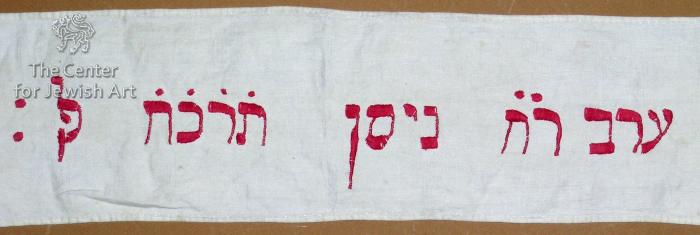Obj. ID: 39319 Wimple (Torah binder), Perleberg, 1868

sub-set tree:
The following description was prepared by William Gross:
The custom of the Wimpel or Torah Binder stretches back some 500 years at least in the world of classic Ashkenaz, the German speaking lands. The cloth which held the child at the time of his circumcision, almost always of linen, was cut into strips and sewn into a long textile. On this lengthy cloth was embroidered or painted a formulaic inscription, blessing the child and wishing that he grow up to "the Torah, the Chupah and good deeds". The beginnings of the custom were executed on linen cloth with silk embroidery. In the late 18th century the custom passed to painting on the textile with substantial illustration, although late examples of embroidered Wimpels do exist. Wimpels in the Gross Family Collection have their origin from Germany, Denmark, the Czech lands, Luxembourg and Alsace. The Wimpel served as a Torah Binder, being brought to the synagogue for use on the child's first birthday, his Bar Mitzvah and the Shabbat Chatan before his marriage.
This example of the Torah binder with a Yiddish or German in Hebrew letters inscription is almost unknown. This example is that rare specimen, made in the tiny Jewish community of Perleberg, some 120 kilometers NW of Berlin. As opposed to the Wimpels commemorating a birth, this example seems to commemorate the birthday of an individual.
Name: Max Alexander







